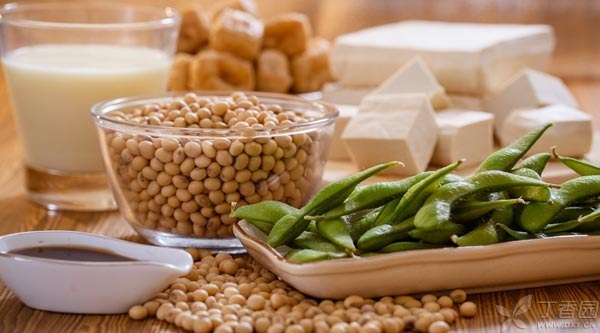
Height and Body Shape in Adolescence: Related to Calcium
High Risk of Osteoporosis in Middle-aged and Elderly People: Associated with Calcium
Emotional Stability: Related to Calcium
Insomnia: Related to Calcium
Even, the increased chances of hypertension, stroke and obesity among adults are also related to calcium.
Although long-term calcium deficiency will not cause obvious discomfort symptoms, it will affect the quality of life of a person throughout his life. The Chinese people’s dietary calcium intake is generally insufficient, which is often neglected by people. In addition, the original utilization and retention of calcium are also very important, and they affect the effect of calcium supplement.
There are many statements about calcium supplement:
Is it what who let the calcium in our bones sneak away?
Is it what that makes the calcium eaten in food not fully play its role?
Is it true that many statements about [calcium loss] circulated online are reliable?
Dr. Clove has screened out seven reliable dietary suggestions for everyone. Please collect them quickly.
Step 1 Eat less salt
The salt intake of Chinese residents far exceeds the recommended value of the World Health Organization, especially in some northern areas where they eat more salty food, while the calcium intake is only half of the recommended value.
Sodium intake is closely related to urinary calcium excretion. For every 2,300 milligrams of sodium (equivalent to 6 grams of salt) excreted by the kidney, 40-60 milligrams of calcium will be lost at the same time. Excessive intake of salt means more calcium needs will be taken away.
If a middle-aged woman eats 1,000 milligrams of sodium (equivalent to 2.5 g of salt) every day without taking more calcium, and all the calcium excreted comes from bone calcium, she will lose 1% more bone calcium every year.
The problem of bone calcium loss caused by excessive sodium intake cannot be ignored. The so-called “eat less salt = supplement more calcium” is by no means empty talk.
Step 2: Eat more fruit
Epidemiological studies have shown that people who eat more fruits in their diet have higher bone mineral density at the same level of calorie and protein intake, and the risk of fracture among teenagers is also reduced.
Why is this?
It turns out that fruits are rich in potassium, which can reduce urinary calcium excretion, and vitamin C in fruits is also one of the factors promoting calcium absorption.
Of course, although eating more fruits is very helpful to reduce calcium loss, fruits themselves contain less calcium and cannot be used to replace the main food source of calcium.
Step 3: Eat more soy products
Bean products are an important source of calcium in diet.
In bean products, such as soybean products, the raw material soybean contains calcium as high as 191 mg/100 g. After making tofu, brine or gypsum should be added to increase the content of calcium and magnesium. For example, the calcium content of brine tofu is 138 mg/100 g, and gypsum tofu is 116 mg/100 g, which is much higher than that of meat products.
In addition, magnesium, vitamin K and soybean isoflavone contained in soybeans can effectively improve the utilization rate of calcium, thus reducing the risk of calcium loss.

Step 4: Eat more green leafy vegetables
Green leafy vegetables are not only rich in calcium, but also nutrients such as magnesium, potassium, vitamin K and vitamin C are factors to improve the utilization rate of calcium.
Some people say that oxalic acid is commonly contained in vegetables, fruits, nuts and beans. Oxalic acid will reduce calcium absorption, but in fact green leafy vegetables can remove most of oxalic acid after blanching.
Recommended edible green leafy vegetables include:
Spinach, leek, amaranth, apricot, radish tassel, in addition, there are common dark green vegetables such as pakchoi, milk cabbage, rape, vegetable stalk, chicken hair, kale, mustard, chrysanthemum, broccoli, lettuce leaves, lettuce and other vegetables.
Step 5: Eat more dairy products
There is research evidence that increasing the intake of dairy products in China is conducive to improving bone health.
The calcium intake in Chinese diet is relatively low, Among the factors of bone development, calcium intake is often [short board]. Dairy products contain milk calcium that can be efficiently utilized by the body. If the intake of dairy products can be increased from 0 to 250g per day (calculated by milk), it will not excessively increase the intake of protein and saturated fatty acids, while it is beneficial and harmless to increase the peak bone density of Chinese people.
The claim that protein in dairy products promotes calcium loss and makes calcium in dairy foods unavailable has also been denied by the research institute.
6. Eat more whole grains
In fact, the calcium content of whole grain coarse cereals is higher than that of rice flour, and the potassium and magnesium contents are much higher than that of refined white rice, which is conducive to improving the utilization rate of calcium.
For example, the contents of K and Mg in long grain rice (long grain rice) were 107 and 28 mg/100 g, respectively, while those in unmilled black rice (long grain rice) were 256 and 147 mg/100 g, respectively. The contents of K and Mg in millet were 284 and 107 mg/100 g, respectively, which were also much higher than those in refined white rice.
Therefore, although phytic acid in whole grain grains can reduce the utilization rate of calcium, the calcium content and potassium and magnesium content are more, which is enough to make up for the loss caused by phytic acid.
7. Milk your coffee
Drinking coffee will lead to an increase in calcium loss, so what about people who like to drink coffee? In this case, we suggest adding pure milk when drinking coffee.
There are three components in coffee beans that are related to the loss or retention of calcium: potassium, oxalic acid and caffeine.
Potassium is beneficial to reduce calcium loss, oxalic acid reduces calcium absorption rate, and caffeine increases urinary calcium loss.
On average, caffeine in each cup of coffee will only increase calcium loss by 2-3 mg. However, caffeine has only a short diuretic effect and will not cause a significant increase in daily urinary calcium loss when drinking a small amount of coffee.
In order to ensure the minimum loss of calcium, we suggest adding pure milk when drinking coffee. Calcium in milk can make up for the loss of calcium caused by caffeine and oxalic acid.
Responsible Editor: Cat Capricorn
